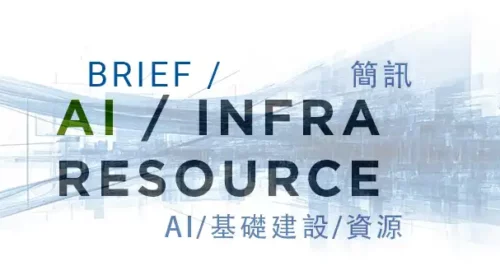Lexin’s profit jump masks slowdown in its main loan business

The company reported a big net income increase for the first quarter, but its revenue fell on sluggishness in its loan facilitation business
Key Takeaways:
- Lexin’s net profit doubled in the first quarter from a year earlier, even as its revenue decreased 4.3%
- A drop in bad loan provisions boosted the company’s bottom line, showing its efforts to improve risk management are bearing fruit
By Warren Yang
Numbers sometimes can be deceiving, which is certainly the case with LexinFintech Holdings Ltd.’s (LX.US) latest quarterly results.
Last Wednesday, the online loan facilitator reported that its net profit for the first quarter doubled to 430 million yuan ($65 million) from a year earlier. Such strong bottom-line growth can make the company easily shine in China’s current cloudy economic climate. But a closer look at the company’s results shows that its underlying business performance wasn’t anywhere near as shiny as its bottom line might suggest.
Lexin’s operating revenue actually decreased 4.3% year-on-year to 3.1 billion yuan during the quarter as income from its core credit facilitation services, which account for more than two-thirds of the total, dropped 17.3%. That’s hardly surprising, given that times are rough for many consumers, especially young ones that the company targets.
The current economic situation in China creates a two-fold problem for lenders. As consumers’ wallets get thinner, they not only cut back on spending but also refrain from borrowing for fear of being unable to repay their debt. Lenders also become more selective when approving loan applications to avoid a spike in defaults. Both factors create difficulties for loan facilitators like Lexin. Reflecting that, the total amount of loans originated through Lexin’s platform shrank 11% year-on-year in the first quarter.
Investors were likely focused on these negatives, rather than the big net profit jump, based on a 13% drop in Lexin shares in the two days after its earnings release. They may also have observed that unlike Lexin, some of the company’s chief rivals managed to boost their revenue and lending volumes during the quarter, signaling that China’s numerous recent efforts to stimulate consumer spending might be having an effect.
Lexin’s big net profit increase, despite the slowdown in its main business, owed largely to two components of its earnings. Provisions for loan repayment guarantees that the company provides for its funding partners, which are a major cost, dropped by a substantial 18%. Those charges equaled more than a quarter of its total operating revenue in the first quarter of last year, but the ratio fell to about 22% in the latest quarter.
Another huge boost came from a change in the fair value of financial guarantee derivatives and loans. In the first quarter of last year, Lexin booked a loss of 316 million yuan for this item. But this time around it recorded a gain of 75 million yuan, representing a nearly 400 million yuan swing.
Both improvements point to decreasing defaults among borrowers using Lexin’s services, possibly a result of the company’s efforts to enhance its risk management. In the past two years, Lexin has been revamping its capabilities to better target high-quality borrowers, using data analytics, to avoid getting hit by a wave of loan impairments.
“Specifically, we focus on improving risk identification capability, optimizing risk strategy system and developing smart risk tools as well as actively exploring the application of large models in risk management,” Arvin Qiao, Lexin’s chief risk officer, said on the company’s earnings call.
Risk-management efforts
Other indicators also suggest that these risk management initiatives are paying off. For one, Lexin’s ratio of loans that were delinquent for 90 days or longer, the standard definition of nonperforming loans (NPLs) for banks, fell to 3.3% as of the end of March from 3.6% a year earlier.
Yet Lexin still has some way to go in this critical area. The overall NPL ratio for the whole banking sector in China is well below 2%, though some believe the actual figure may be higher due to the weak state of the Chinese economy. And among the company’s direct competitors, FinVolution (FINV.US) and Qifu Technology (QFIN.US) both kept their figures at about 2% at the end of March, even as each managed to grow their revenue and transaction volume in the first quarter.
In terms of revenue growth, one bright spot for Lexin in the first quarter was its “tech-empowerment” services, income from which jumped more than 70% to become the company’s second-largest revenue source at about 20% of its total. Those services are comprised of tailored technology solutions for the company’s institutional partners across various stages of credit facilitation, including customer acquisition and credit assessments.
Regardless, the outlook for Lexin is rather murky. Stimulating domestic consumption is a key focus for China right now, with policymakers rolling out a series of measures to achieve that. Many of those are aimed at purchases of big-ticket items like home appliances and cars, which often require loans and should thus benefit both lenders and lending intermediaries.
If those programs do bear fruit, it may breathe some new life into Lexin’s business. But the fact that rivals like FinVolution and Qifu appear to be benefitting from the stimulus measures already, while Leixin isn’t, may reflect Lexin’s focus on reducing default rates.
While reporting its first-quarter results, Lexin said it will pay out 30% of its net profit as dividends from the second half of this year, up from the current 25%, which was raised from 20% just last November. The fact that this didn’t stop the company’s shares from falling is quite telling. The series of rapid hikes in its dividend ratio could signal its own admission that it is having difficulty finding investment opportunities in China or overseas. Lexin does have some operations outside China but they remain insignificant.
This means that the company will be stuck doing business in China’s feeble economy for the foreseeable future, dimming its prospects. Its revenue is expected to slip 2% this year from 2024, according to four analyst forecasts compiled by Yahoo Finance.
Lexin shares trade at a trailing price-to-earnings (P/E) ratio of 7.3 and a price-to-sales (P/S) ratio of just 0.7. By comparison, the former multiple for FinVolution is slightly lower at 6.2 but the latter is a bit higher at 1.2, which isn’t so inspiring either. Qifu trades at a similar P/E ratio of 6.58, though its P/S ratio is significantly higher at 3.06.
To win back investors, Lexin will have to prove it can not only be disciplined, but can grow at the same time. And its latest numbers show that achieving that balance is easier said than done.
To subscribe to Bamboo Works weekly free newsletter, click here





